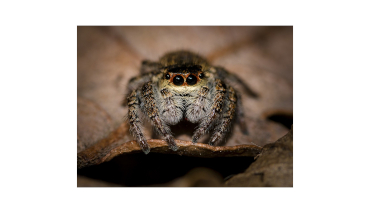Spiders the Size of a House?
Romans 12:1
“I beseech you therefore, brethren, by the mercies of God, that ye present your bodies a living sacrifice, holy, acceptable unto God, [which is] your reasonable service.”
 The largest known beetle in the world is the aptly named goliath beetle. This African beetle can become almost as large as a mouse. Dinosaurs were not the largest animals ever to live. The great blue whale holds that honor. The smallest mammal in the world is smaller than many insects. A newly discovered species of bat in Thailand weighs only six one-hundredths of an ounce.
The largest known beetle in the world is the aptly named goliath beetle. This African beetle can become almost as large as a mouse. Dinosaurs were not the largest animals ever to live. The great blue whale holds that honor. The smallest mammal in the world is smaller than many insects. A newly discovered species of bat in Thailand weighs only six one-hundredths of an ounce.
Such extremes might lead some to wonder whether those giant insects we see in the movies would ever develop. Could a spider grow to be as large as a house?
You will be happy to know that no spider or any other insect could grow as large as a house. We can be sure of this because of the way insects breathe. Insects breathe through small tubes along their bodies. These tubes provide oxygen directly to their internal tissues. If an insect were to grow too large, these tubes could not get enough oxygen to the tissues. This is because the larger the creature, the more internal living tissue that requires oxygen. You and I have lungs that provide a network of surfaces equal to the size of a tennis court. An insect our size would need a body that has the surface area of a tennis court, too, which is an impossibility.
Even though different creatures have different organs to supply their needs, each creature has just the right organs for its needs. This is a sign of our Creator’s wisdom. This fact also tells us that living things are not related to each other by evolution.
Prayer: I thank You, dear Lord, for my eyes, ears, all my senses, and all the wonderful tissues You have built into my body for life. Help me to use my life in Your service. Amen.
Author: Paul A. Bartz
Ref: Wilder, Rachel. 1983. “Secrets of size.” Science Digest, Sept. p. 112. Photo: Spider by Martin Winkler CC0_Pixabay.com
© 2021 Creation Moments. All rights reserved.